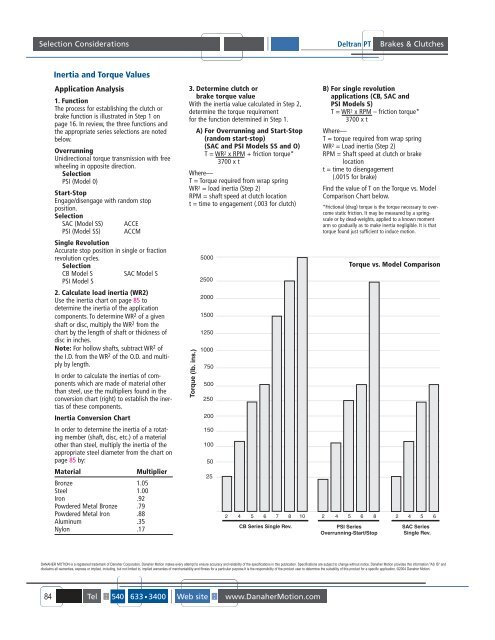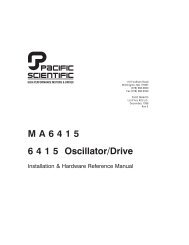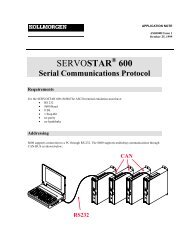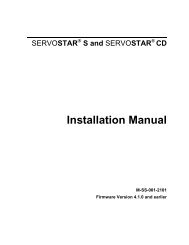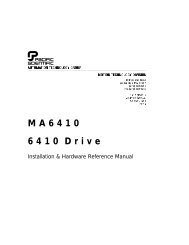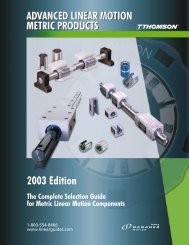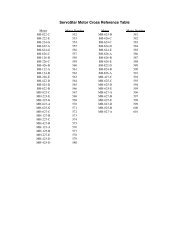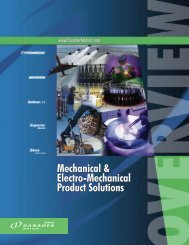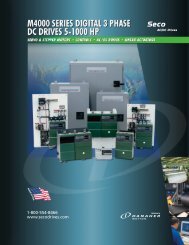BRAKES & CLUTCHES
BRAKES & CLUTCHES
BRAKES & CLUTCHES
Create successful ePaper yourself
Turn your PDF publications into a flip-book with our unique Google optimized e-Paper software.
Selection Considerations<br />
84<br />
Inertia and Torque Values<br />
Application Analysis<br />
1. Function<br />
The process for establishing the clutch or<br />
brake function is illustrated in Step 1 on<br />
page 16. In review, the three functions and<br />
the appropriate series selections are noted<br />
below.<br />
Overrunning<br />
Unidirectional torque transmission with free<br />
wheeling in opposite direction.<br />
Selection<br />
PSI (Model 0)<br />
Start-Stop<br />
Engage/disengage with random stop<br />
position.<br />
Selection<br />
SAC (Model SS) ACCE<br />
PSI (Model SS) ACCM<br />
Single Revolution<br />
Accurate stop position in single or fraction<br />
revolution cycles.<br />
Selection<br />
CB Model S SAC Model S<br />
PSI Model S<br />
2. Calculate load inertia (WR2)<br />
Use the inertia chart on page 85 to<br />
determine the inertia of the application<br />
components. To determine WR2 of a given<br />
shaft or disc, multiply the WR2 from the<br />
chart by the length of shaft or thickness of<br />
disc in inches.<br />
Note: For hollow shafts, subtract WR2 of<br />
the I.D. from the WR2 of the O.D. and multiply<br />
by length.<br />
In order to calculate the inertias of components<br />
which are made of material other<br />
than steel, use the multipliers found in the<br />
conversion chart (right) to establish the inertias<br />
of these components.<br />
Inertia Conversion Chart<br />
In order to determine the inertia of a rotating<br />
member (shaft, disc, etc.) of a material<br />
other than steel, multiply the inertia of the<br />
appropriate steel diameter from the chart on<br />
page 85 by:<br />
Material Multiplier<br />
Bronze 1.05<br />
Steel 1.00<br />
Iron .92<br />
Powdered Metal Bronze .79<br />
Powdered Metal Iron .88<br />
Aluminum .35<br />
Nylon .17<br />
Tel<br />
3. Determine clutch or<br />
brake torque value<br />
With the inertia value calculated in Step 2,<br />
determine the torque requirement<br />
for the function determined in Step 1.<br />
A) For Overrunning and Start-Stop<br />
(random start-stop)<br />
(SAC and PSI Models SS and O)<br />
T = WR2 x RPM + friction torque*<br />
3700 x t<br />
Where—<br />
T = Torque required from wrap spring<br />
WR2 = load inertia (Step 2)<br />
RPM = shaft speed at clutch location<br />
t = time to engagement (.003 for clutch)<br />
Torque (lb. ins.)<br />
5000<br />
2500<br />
2000<br />
1500<br />
1250<br />
1000<br />
750<br />
500<br />
250<br />
200<br />
150<br />
100<br />
50<br />
25<br />
2 4 5 6 7 8 10<br />
CB Series Single Rev.<br />
: 540 633 3400 Web site : www.DanaherMotion.com<br />
Deltran PT<br />
Brakes & Clutches<br />
B) For single revolution<br />
applications (CB, SAC and<br />
PSI Models S)<br />
T = WR2 x RPM – friction torque*<br />
3700 x t<br />
Where—<br />
T = torque required from wrap spring<br />
WR2 = Load inertia (Step 2)<br />
RPM = Shaft speed at clutch or brake<br />
location<br />
t = time to disengagement<br />
(.0015 for brake)<br />
Find the value of T on the Torque vs. Model<br />
Comparison Chart below.<br />
*Frictional (drag) torque is the torque necessary to overcome<br />
static friction. It may be measured by a springscale<br />
or by dead-weights, applied to a known moment<br />
arm so gradually as to make inertia negligible. It is that<br />
torque found just sufficient to induce motion.<br />
Torque vs. Model Comparison<br />
2 4 5 6 8<br />
PSI Series<br />
Overrunning-Start/Stop<br />
2 4 5 6<br />
SAC Series<br />
Single Rev.<br />
DANAHER MOTION is a registered trademark of Danaher Corporation. Danaher Motion makes every attempt to ensure accuracy and reliability of the specifications in this publication. Specifications are subject to change without notice. Danaher Motion provides this information "AS IS" and<br />
disclaims all warranties, express or implied, including, but not limited to, implied warranties of merchantability and fitness for a particular purpose.It is the responsibility of the product user to determine the suitability of this product for a specific application. ©2004 Danaher Motion.


